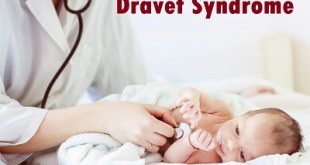Definition
Aicardi syndrome is a disorder that occurs almost exclusively in females. It is characterized by three main features that occur together in most affected individuals. People with this syndrome have absent or underdeveloped tissue connecting the left and right halves of the brain (agenesis or dysgenesis of the corpus callosum). They have seizures beginning in infancy (infantile spasms), which tend to progress to recurrent seizures (epilepsy) that can be difficult to treat. Affected individuals also have chorioretinal lacunae, which are defects in the light-sensitive tissue at the back of the eye (retina).
People with Aicardi syndrome often have additional brain abnormalities, including asymmetry between the two sides of the brain, brain folds and grooves that are small in size or reduced in number, cysts, and enlargement of the fluid-filled cavities (ventricles) near the center of the brain. Some have an unusually small head (microcephaly). Most affected individuals have moderate to severe developmental delay and intellectual disability, although some people with this disorder have milder disability.
Many girls also have developmental abnormalities of their optic nerves and some have microphthalmia (small eyes). Skeletal problems such as absent or abnormal ribs and abnormalities of vertebrae in the spinal column (including hemi vertebrae and butterfly vertebrae) have also been reported. Some girls also have skin problems, facial asymmetry, small hands, and an increased incidence of tumors. (It is distinct from Aicardi-Goutieres syndrome, which is an inherited encephalopathy that affects newborn infants.)
A baby with Aicardi syndrome
History and prevalence
It was first recognized by a French neurologist named Jean Aicardi in 1965. In 1998, a review article by Aicardi describing the syndrome was published in the journal International Pediatrics. Estimates suggest that the worldwide prevalence is around several thousand, with almost 900 cases having been identified in the United States.
Aicardi syndrome epidemiology
Although cases occur throughout the world, exact incidence and prevalence is unknown. In a series of children with infantile spasm, 2% had Aicardi syndrome. A study by Lund et al found the age-adjusted prevalence of this syndrome in Norway to be 0.63 cases per 100,000 females, as calculated for January 1, 2011.
Given the phenotypic heterogeneity and diagnostic difficulties associated with young children, it may be a more frequent cause of mental retardation and seizure in girls than previously thought. Some children may, however, have normal neurodevelopment, which significantly increases the potential number of children with Aicardi syndrome.
Causes
A defect in the X chromosome is thought to be involved in the development of Aicardi syndrome. However, the specific gene or genes on the X chromosome that is involved in causing Aicardi syndrome have not yet been identified, so the involvement of the X chromosome has not yet been fully confirmed.
Females have two copies of the X chromosome, while normal males only have one copy of this chromosome. Almost all known cases of Aicardi syndrome are in females. Only abnormal males with two copies of the X chromosome have been found to have this syndrome. This suggests that Aicardi syndrome may be a dominant X-linked condition, which means that a mutation on one X chromosome can cause the condition.
It is a genetic condition, but it is not thought to be inherited. Rather, it is thought to result when a normal gene mutates randomly (during either egg or sperm development or embryonic development) such that it no longer functions properly in the affected child. It is very uncommon for families to have more than one member affected by Aicardi syndrome, which suggests that it is not inherited.
Aicardi syndrome risk factors
The following factors may increase the likelihood of Aicardi’s Syndrome:
- Common in males with Klinfelter Syndrome
Risk to family members
It is thought to be sporadic, and there are no confirmed cases of siblings with Aicardi syndrome, except for identical twins. Thus the chance of a couple having a second affected child is believed to be extremely low. Although there are some mildly affected individuals, there are no known reports of a mother passing on Aicardi syndrome to a child, and thus it is thought that all cases result from brand new (de novo) mutations.
Complications
Complications depend on the severity of symptoms.
Symptoms of aicardi syndrome
The symptoms typically begin to surface in infancy but may not become apparent until early childhood. Common symptoms include:
- Infantile spasms (involuntary muscle spasms that often involve the entire body)
- Epilepsy
- Intellectual disability
- Atypically small head
- Atypically small eyes
- Muscle weakness
- Delayed motor development
- Abnormal development of the ribs and/or spine
- Vision impairment or blindness
Aicardi syndrome diagnosis
Fetal MRI and prenatal ultrasound may show signs of brain abnormalities before a child is born.
Tests that confirm the diagnosis after a child is born include:
- MRI of the brain to check for abnormalities in the corpus callosum or other brain structures.
- EEG to assess brainwaves and confirm an epilepsy diagnosis, including which type.
- Eye exam from a pediatric ophthalmologist to check for coloboma and choroidal lacunae.
Agenesis of the corpus callosum and Aicardi syndrome: A Neuroimaging and Clinical Comparison
Treatment and medications
There are few treatment options as this is a relatively new syndrome. Research is still unraveling the details of this syndrome. The symptoms are treated; however, there is no cure for the disease. Based on the current knowledge, the following treatments have been developed:
Reverse transcriptase inhibitor treatment (RTI)
Patients with Aicardi-Goutieres Syndrome may benefit from RTI treatment since and are nucleases that digest DNA. In the absence of these genes, there is a buildup of DNA that can be inhibited with reverse transcriptase inhibitors. These RTIs are used to treat patients with HIV and hence, their safety limits are clearly known.
Antibodies against interferon-alpha
In this case, anti-interferon alpha antibodies are used to block the activity of the interferon-alpha type I receptor or the different forms of interferon-alpha in the CSF.
Anti-autoantibody medications
Aicardi-Goutieres Syndrome results in an immune response, where the production of antibodies increases against the body’s own cells. Medications targeted against the increased B cells or T cells are a form of treatment for Aicardi-Goutieres Syndrome.
Mycophenolate mofetil is used against reactive T cells. Such medications have side effects, however, their use is monitored and managed based on the degree of disease progression.
Other forms of treatment include the following:
- Treatment with folic acid may increase the folate levels in the CSH.
- When there is an active immune response due to Aicardi-Goutieres Syndrome, corticosteroid therapy is required.
Prevention of Aicardi’s Syndrome
No, it is not possible to prevent, however, the genetic mutations of the Aicardi syndrome gene cause the disease, so cannot be prevented
 Diseases Treatments Dictionary This is complete solution to read all diseases treatments Which covers Prevention, Causes, Symptoms, Medical Terms, Drugs, Prescription, Natural Remedies with cures and Treatments. Most of the common diseases were listed in names, split with categories.
Diseases Treatments Dictionary This is complete solution to read all diseases treatments Which covers Prevention, Causes, Symptoms, Medical Terms, Drugs, Prescription, Natural Remedies with cures and Treatments. Most of the common diseases were listed in names, split with categories.







